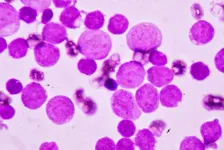The seven rocky planets of TRAPPIST-1 seem to have very similar compositions
Precise measurements reveal that the exoplanets of the system discovered by ULiège researchers have remarkably similar densities, which provides new clues about their compositions.
2021-01-22
(Press-News.org) A new international study led by astrophysicist Eric Agol from the University of Washington has measured the densities of the seven planets of the exoplanetary system TRAPPIST-1 with extreme precision, the values obtained indicating very similar compositions for all the planets. This fact makes the system even more remarkable and helps to better understand the nature of these fascinating worlds. This study has just been published in the Planetary Science Journal.
The TRAPPIST-1 system is home to the largest number of planets similar in size to our Earth ever found outside our solar system. Discovered in 2016 by a research team led by Michaël Gillon, astrophysicist at the University of Liège, the system offers an insight into the immense variety of planetary systems that probably populate the Universe. Since their detection, scientists have studied these seven planets using multiple space (NASA's Kepler and Spitzer telescopes) and ground-based telescopes (TRAPPIST and SPECULOOS in particular). The Spitzer telescope alone, managed by NASA's Jet Propulsion Laboratory, provided more than 1,000 hours of targeted observations of the system before being decommissioned in January 2020.
Hours of observations that enabled to refine the information we have on the exoplanetary system. "Since we can't see the planets directly, we analyze in detail the variations of the apparent brightness of their star as they 'transit' it, i.e. as they passes in front of it," explains Michaël Gillon." Previous studies had already enabled astronomers to take precise measurements of the masses and diameters of the planets, which led to the determination that they were similar in size and mass to our Earth and that their compositions must have been essentially rocky. "Our new study has greatly improved the precision of the densities of the planets, the measurements obtained indicating very similar compositions for these seven worlds," says Elsa Ducrot, a doctoral student at ULiège. "This could mean that they contain roughly the same proportion of materials that make up most rocky planets, such as iron, oxygen, magnesium and silicon, which make up our planet. "After correcting for their different masses, the researchers were able to estimate that they all have a density of around 8% less than the Earth's, a fact that could have an impact on their compositions.
A different recipe
The authors of the study put forward three hypotheses to explain this difference in density with our planet. The first involves a composition similar to that of the Earth, but with a lower percentage of iron (about 21% compared to the 32% of the Earth). Since most of the iron in the Earth's composition is found in the Earth's core, this iron depletion of the TRAPPIST-1 planets could therefore indicate cores with lower relative masses. The second hypothesis implies oxygen-enriched compositions compared to that of our planet. By reacting with iron, oxygen would form iron oxide, better known as 'rust'. The surface of Mars gets its red colour from iron oxide, but like its three terrestrial sisters (Earth, Mercury, and Venus), it has a core of unoxidised iron. However, if the lower density of the TRAPPIST-1 planets was entirely due to oxidised iron, then the planets would be 'rusted to the heart' and may not have a real core, unlike the Earth. According to Eric Agol, an astrophysicist at the University of Washington and lead author of the new study, the answer could be a combination of both scenarios - less iron in general and some oxidised iron.
The third hypothesis put forward by the researchers is that the planets are enriched with water compared to the Earth. This hypothesis would agree with independent theoretical results indicating a formation of the TRAPPIST-1 planets further away from their star, in a cold, ice-rich environment, followed by internal migration. If this explanation is correct, then water could account for about 5% of the total mass of the four outer planets. In comparison, water accounts for less than one tenth of 1% of the total mass of the Earth. The three inner planets in TRAPPIST-1, located too close to their stars for water to remain liquid under most circumstances, would need hot, dense atmospheres like on Venus, where water could remain bound to the planet in the form of vapour. But according to Eric Agol, this explanation seems less likely because it would be a coincidence that all seven planets have just enough water present to have such similar densities.
"The night sky is full of planets, and it is only within the last 30 years that we have been able to begin to unravel their mysteries," rejoices Caroline Dorn, astrophysicist at the University of Zurich and co-author of the article. "The TRAPPIST-1 system is fascinating because around this unique star we can learn about the diversity of rocky planets within a single system. And we can also learn more about a planet by studying its neighbours, so this system is perfect for that.
INFORMATION:
[Attachments] See images for this press release:

ELSE PRESS RELEASES FROM THIS DATE:
2021-01-22
ITHACA, NY - Biologists have long wondered how complex organisms contain a variety of dramatically different types of cells with specialized functions, even though all of those cells are genetically identical.
New research reveals how proteins, called "pioneer transcription factors," help turn on key genes that give cell types their unique properties and functions.
These pioneer factors, it turns out, help unspool tightly wound coils of DNA so that genetic blueprints in genes can be read and proteins that play roles in biological processes can be made.
The study in fruit flies, "Pioneer-like Factor GAF Cooperates with PBAP (SWI/SNF) and NURF (ISWI) to Regulate Transcription," was published Dec. 10 in the journal Genes & Development.
"We know pretty ...
2021-01-22
January 22, 2021 - Patients with substance use disorders (SUDs) being treated for serious medical conditions are more likely to leave the hospital against medical advice (AMA) than those without addiction. A special type of contract with healthcare providers might enable patients to consent in advance to life-saving medical care - even if they later refuse treatment, according to a commentary in the Journal of Addiction Medicine, the official journal of the American Society of Addiction Medicine (ASAM). The journal is published in the Lippincott portfolio by Wolters Kluwer.
The Substance Use Advance Directive (SUAD) "has the potential to greatly improve the current state of treatment for life-threatening comorbid conditions in SUD patients through ...
2021-01-22
Human activities might have shifted the movement of caribou in and near the Arctic National Wildlife Refuge, according to scientists with the University of Cincinnati.
Each year caribou take on one of nature's longest land migrations, trekking hundreds of miles across Alaska and Canada to find food and give birth in their preferred calving grounds.
A UC study published today in the journal Frontiers in Ecology and Evolution identified a shift in one herd's movements after the 1970s that coincided with changes in herd size and climate, and the construction of new roads and other energy infrastructure.
Researchers used isotope analysis of antlers shed by female caribou to track their historical patterns of movement over the landscape. Female caribou are unique among deer for growing ...
2021-01-22
COLUMBUS, Ohio - A new study suggests that a lot of people might be going through life with symptoms that resemble concussion - a finding supporting researchers' argument that athletes recovering from a brain injury should be assessed and treated on a highly individualized basis.
In the national study, between 11% and 27% of healthy college athletes with no history of a recent concussion reported combinations of symptoms that met criteria for post-concussion syndrome (PCS) as defined by an international classification system. Among the nearly 31,000 student-athletes surveyed, three factors stood out as the most likely to predict ...
2021-01-22
Alongside Dennis vanEngelsdorp, associate professor at the University of Maryland (UMD) in Entomology named for the fifth year in a row for his work in honey bee and pollinator health, Yiping Qi, associate professor in Plant Science, represented the College of Agriculture & Natural Resources on the Web of Science 2020 list of Highly Cited Researchers for the first time. This list includes influential scientists based on the impact of their academic publications over the course of the year. In addition to this honor, Qi is already making waves in 2021 with a new high-profile publication in Nature Plants introducing SpRY, a newly engineered variant ...
2021-01-22
Researchers at the Paul Scherrer Institute PSI have put forward a detailed plan of how faster and better defined quantum bits - qubits - can be created. The central elements are magnetic atoms from the class of so-called rare-earth metals, which would be selectively implanted into the crystal lattice of a material. Each of these atoms represents one qubit. The researchers have demonstrated how these qubits can be activated, entangled, used as memory bits, and read out. They have now published their design concept and supporting calculations in the journal PRX Quantum.
On the way to quantum computers, an initial requirement is to create so-called quantum ...
2021-01-22
In June 1991, Mount Pinatubo, a volcanic peak on the Philippine Island of Luzon, literally blew its top. It was the second-most powerful volcanic eruption of the 20th century, ten times stronger than Mount Saint Helens, and its effects were devastating. Lava and ash spewed into the surrounding environment in the Zambales Mountains, pooling in layers up to 600 feet thick in the valleys. Following the eruption, powerful typhoons and monsoon rains triggered landslides and ash flows that continued for many months. Eight hundred people lost their lives, and the lush forests that covered the mountain prior to the eruption were destroyed or severely damaged. In recent years, scientists returned to the region to survey the surviving mammal populations, and in a new paper in the ...
2021-01-22
Human papillomavirus (HPV) is the most common sexually transmitted infection, with an estimated 79 million Americans currently infected with the virus, according to the Centers for Disease Control and Prevention. If a high-risk HPV infection does not go away, it can lead to the development of a variety of cancers, including 91% of all cervical cancers, 70% of oropharyngeal cancers and cancers of the vulva, vagina, penis and anus.
HPV vaccination can significantly reduce the number of new cancer diagnoses linked to the virus, in addition to preventing a number of other health complications.
"Given ...
2021-01-22
Patients with acute myeloid leukemia (AML), the most common form of acute leukemia in adults, that has gone into remission following initial chemotherapy remain in remission longer and have improved overall survival when they are given a pill form of the cancer drug azacitidine as a maintenance treatment, according to a randomized, international phase 3 clinical trial for which Weill Cornell Medicine and NewYork-Presbyterian are trial sites. This is the first time a maintenance treatment for AML has shown such a strong benefit for patients, and it is already being adopted as part of standard care.
The results, which were published Dec. 24 in the New England Journal of Medicine, led to the U.S. Food and Drug Administration's approval in September 2020 of oral ...
2021-01-22
Many college students fully recover from infectious mononucleosis (which is almost always caused by Epstein-Barr virus) within 1-6 weeks, but some go on to develop chronic fatigue syndrome, also called myalgic encephalomyelitis (ME/CFS). A longitudinal study from DePaul University and Northwestern University followed 4,501 college students to examine risk factors that may trigger longer illness. The research appears in the journal Clinical Infectious Diseases and was funded by the National Institute of Allergy and Infectious Diseases.
Previous retrospective studies found that risk factors ...
LAST 30 PRESS RELEASES:
[Press-News.org] The seven rocky planets of TRAPPIST-1 seem to have very similar compositions
Precise measurements reveal that the exoplanets of the system discovered by ULiège researchers have remarkably similar densities, which provides new clues about their compositions.




